‘Prominent’ people (and sometimes events), often in significant positions in politics, entertainment, business, etc., are the technical subject of fake images called deepfakes. For instance, a person whose movements and speech are altered or reproduced by artificial intelligence (AI)-assisted deep learning techniques can be held responsible for what they did not say or do. This does not only affect the person who is the element of the deepfake video (the victim), as those who watch the fake video are also manipulated, can make them susceptible to advanced scams, and may lead to financial and mental damages.
The impact of deepfake videos often parallels the speed at which they spread on social media. Deepfake videos, which are often shared on social platforms, can rapidly gain momentum, and be watched by millions of people, as numerous previous examples have shown. Some deepfake videos have such a profound impact that they have even been featured in the main news bulletins of reputable TV channels. Typically, the news story is usually about how high the impact of the deepfake content has been; thousands of shares, millions of views, etc.
A Growing Risk Factor for Organizations: Deepfake
Deepfake is not just putting individuals in awkward situations in the public spotlight due to fake videos. The threat is also affecting companies and government agencies. The deepfake threat makes it necessary to remember examples such as an employee communicating with a fake video or voice of their boss and following various commands without questioning them. By sending messages that use the images and voices of executives, employees can be tricked into making fraudulent payments, and highly sensitive company information can fall into the hands of cybercriminals. With deepfake, cybercriminals can develop e-mail and SMS-oriented attacks and send employees visual and audio messages that are difficult to distinguish from the reality. Malicious individuals or groups can cause harm to companies and government institutions through deepfake video, so it is necessary to keep corporate cybersecurity policies intact.

The ongoing intense battle against ransomware underscores the increasing importance of comprehensive methodologies that encompass protection from deepfake videos alongside conventional cybersecurity strategies such as employee training, securing IoT devices and cloud computing. There is no doubt that companies should continue their cybersecurity efforts to address the deepfake threat and actively evaluate solutions through this regard. So how can we detect deepfake videos and what should be considered?
How to Recognize Deepfake Videos?
How to understand deepfake videos is among the frequently asked questions that are among the questions of the last period. Deepfake obscures the reality we perceive with our main senses. When it is not realized that the reality perceived by hearing and seeing is fake, emotional/realistic reactions can be given, and consequences may occur in the focus of fraud. Fortunately, it is possible to protect yourself from deepfake videos and accompanying threats. Pay attention to natural details!
First of all, do not overlook natural details. When examined carefully, an unusual blinking of the eyes is a common feature of deepfake videos. This is because the difficulty of artificial intelligence systems in mimicking natural eye movements. Additionally, odd head movements are also crucial signals.
-Asymmetric facial features
Asymmetry is another factor that helps to understand deepfake videos. This is because accessories such as glasses, jewelry and earrings may not be compatible with both sides of the face. Accessories in and near the facial area may take an odd position on the face. Accessories such as hats and berets may also be incompatible with the background. In summary, it may be easier to determine if a video of someone wearing glasses, earrings or a hat is a deepfake.

-Beyond the face
If there are trees, poles, signs, buildings, and other people’s faces in the background, these elements can be distorted. If there is diversity in the background, there will be more elements that are difficult to fake, deepfake videos often have simple backgrounds, but if this is not the case, you should keep in mind that the number of clues to understand will be high to detect.
-Hair, ears, and teeth
Hair is one of the most important clues. If it is not clear where the hair ends and the background begins, these details may indicate manipulation. Teeth and ears are extremely intricate structures when examined closely. AI is often unable to accurately mimic the number of teeth and the curved structure of the ears. Teeth may appear repeated, gaps may also appear in some parts. The inside of the ear may appear blurred, the two ears may appear incompatible.
-Shoulder
Here’s another answer to the question of how to recognize deepfake videos: Shoulders. The shoulder, similar to the face, is a factor that reveals obvious differences from the background. There may be inconsistencies between the background and the shoulder, differences in light. It may look like elements in the image have been superimposed. If these are present, the video may be fake.
It is not difficult to find such clues by scrutinizing videos a little more carefully. It’s true that advances in technology have made it harder to spot deepfakes. However, lip movement, any tone of voice and synchronization issues between faces are often significant features of deepfake videos. Add in video distortions and odd head and body movements, and each one of these shows that it is possible to understand deepfakes.
EnQualify integrates cutting-edge anti-spoofing technology and high security liveness detection to safeguard your business against sophisticated deepfake attacks. Elevate your security measures and deliver a superior customer experience with EnQualify’s state-of-the-art verification capabilities.



Industries
Company
Resources
Copyrights © EnQualify | All rights reserved. Privacy Policy | Cookie Policy | Terms of Use | Security & Compliance